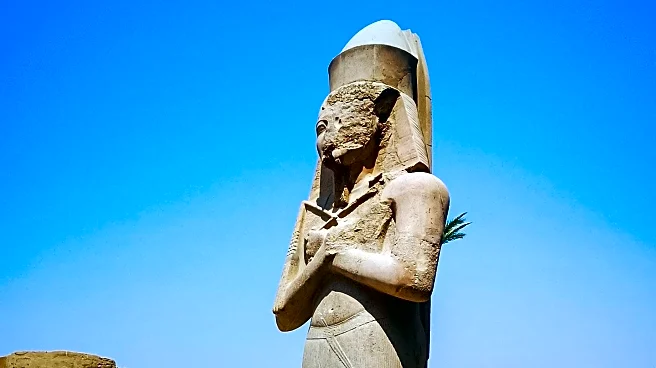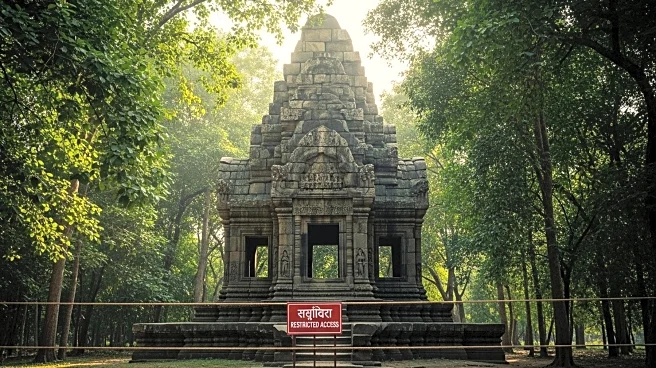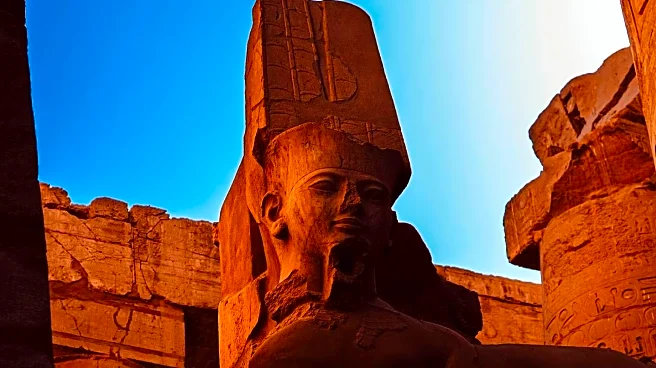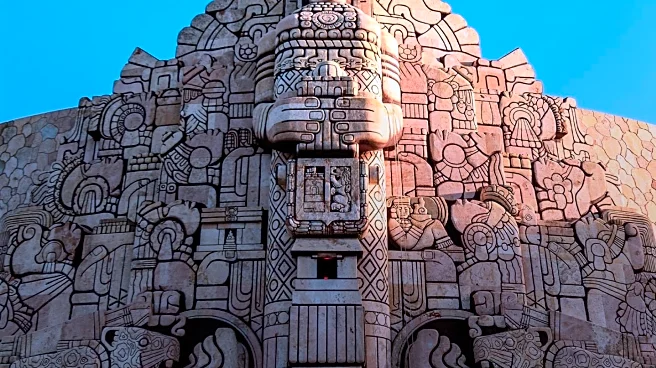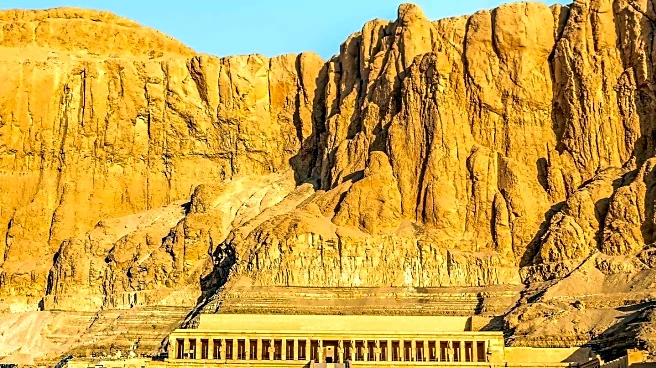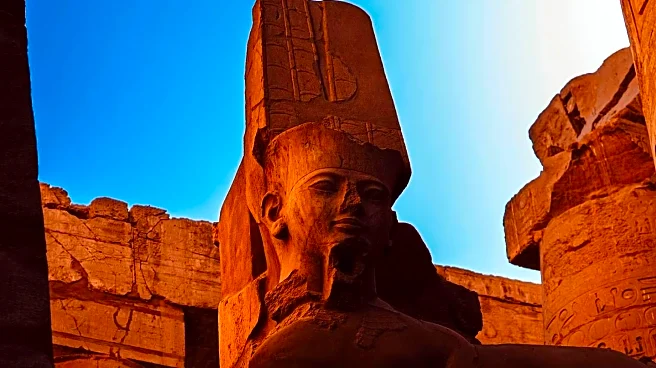What's Happening?
A mining company in Bicholim has restricted public access to the Namazgah site, a protected monument recognized by the Goa government for nearly 25 years. The site, which showcases Mughal-era architecture and was patronized by Mughal prince Akbar II, is now difficult to access due to the mining company's control over the road leading to it. Visitors and staff from the Department of Archaeology and the Goa Human Resource Development Corporation have been denied entry via the traditional route, which passes through the mining lease. An alternative path has been provided, but it is challenging to navigate, especially for physically challenged individuals, due to its steep steps and overgrown vegetation. The mining activities near the site, including ore clearing and transportation, pose a threat to the Namazgah's foundation.
Why It's Important?
The restriction of access to the Namazgah site highlights the ongoing conflict between heritage preservation and industrial activities. The Namazgah is not only a significant historical and architectural monument but also a cultural heritage site that attracts regular visitors. The mining company's actions have raised concerns about the preservation of the site and the environmental impact of mining activities in the area. The denial of access affects the ability of archaeological staff to perform their duties and limits public appreciation of the site. This situation underscores the need for a balanced approach that respects both economic development and cultural heritage preservation.
What's Next?
The Director of Archaeology has instructed the mining company to cease restricting access to the Namazgah site. However, the ongoing mining activities continue to pose a threat to the site's foundation. It remains to be seen how the situation will be resolved, and whether the mining company will comply with the instructions. The local community and heritage enthusiasts may continue to advocate for better access and preservation measures. The situation may prompt discussions on regulatory measures to protect heritage sites from industrial encroachment.
Beyond the Headlines
The situation at the Namazgah site reflects broader issues of heritage conservation in the face of industrial expansion. It raises ethical questions about the prioritization of economic interests over cultural and historical preservation. The case may serve as a precedent for similar conflicts in other regions, highlighting the need for comprehensive policies that safeguard heritage sites while accommodating economic activities. The cultural significance of the Namazgah, with its Mughal-era architecture, adds a layer of complexity to the debate, emphasizing the importance of preserving diverse historical narratives.

